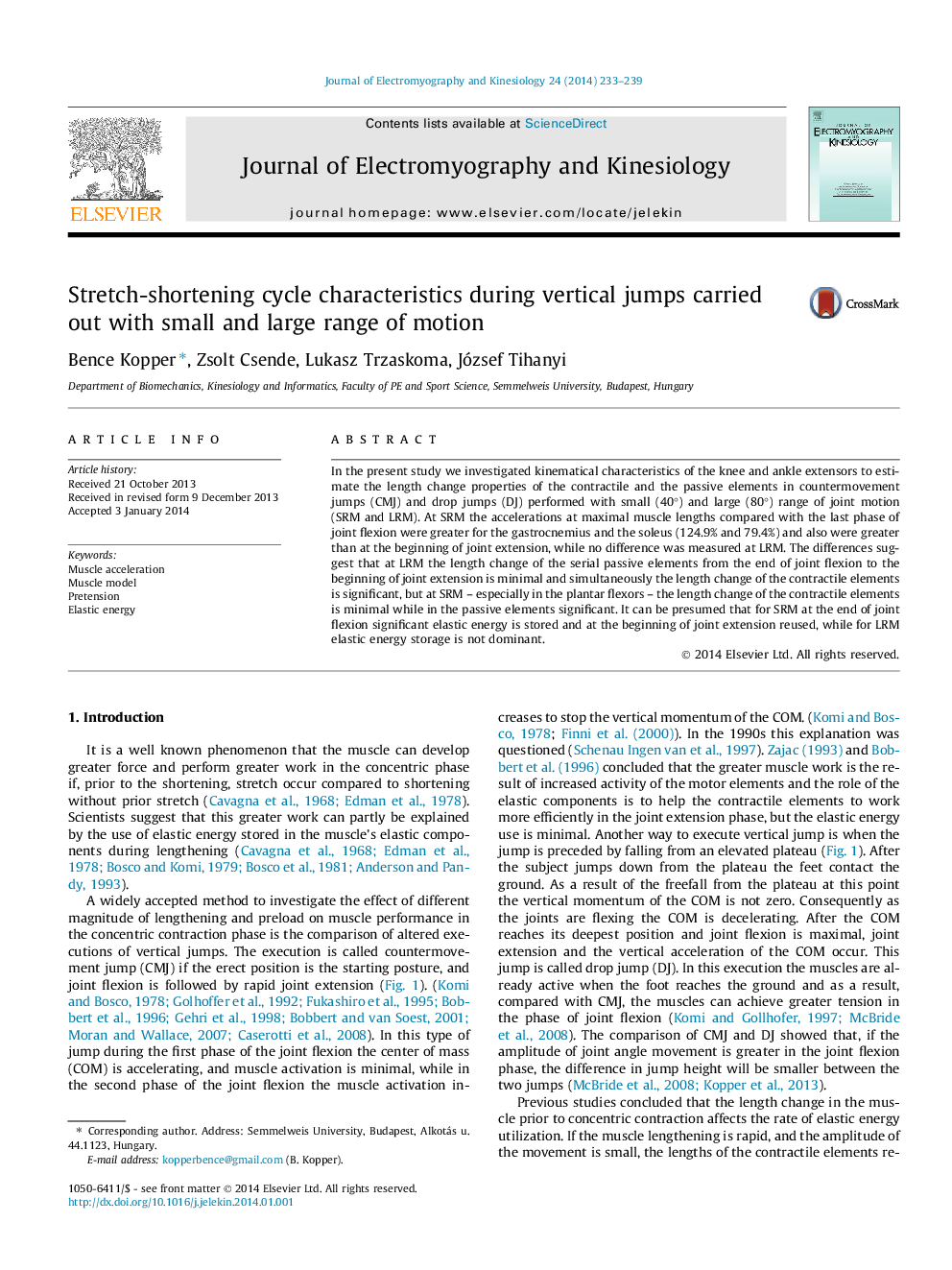| Article ID | Journal | Published Year | Pages | File Type |
|---|---|---|---|---|
| 4064659 | Journal of Electromyography and Kinesiology | 2014 | 7 Pages |
In the present study we investigated kinematical characteristics of the knee and ankle extensors to estimate the length change properties of the contractile and the passive elements in countermovement jumps (CMJ) and drop jumps (DJ) performed with small (40°) and large (80°) range of joint motion (SRM and LRM). At SRM the accelerations at maximal muscle lengths compared with the last phase of joint flexion were greater for the gastrocnemius and the soleus (124.9% and 79.4%) and also were greater than at the beginning of joint extension, while no difference was measured at LRM. The differences suggest that at LRM the length change of the serial passive elements from the end of joint flexion to the beginning of joint extension is minimal and simultaneously the length change of the contractile elements is significant, but at SRM – especially in the plantar flexors – the length change of the contractile elements is minimal while in the passive elements significant. It can be presumed that for SRM at the end of joint flexion significant elastic energy is stored and at the beginning of joint extension reused, while for LRM elastic energy storage is not dominant.
